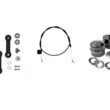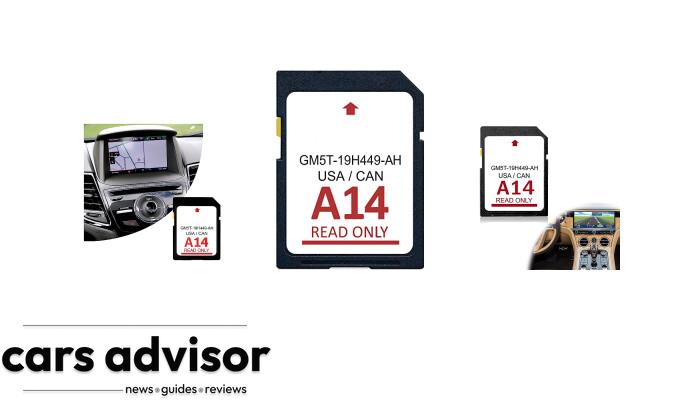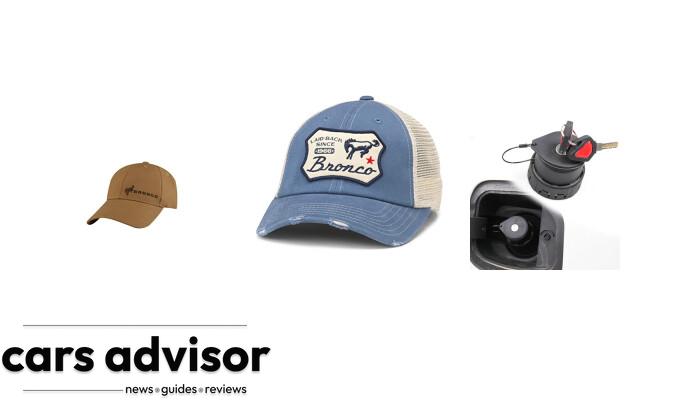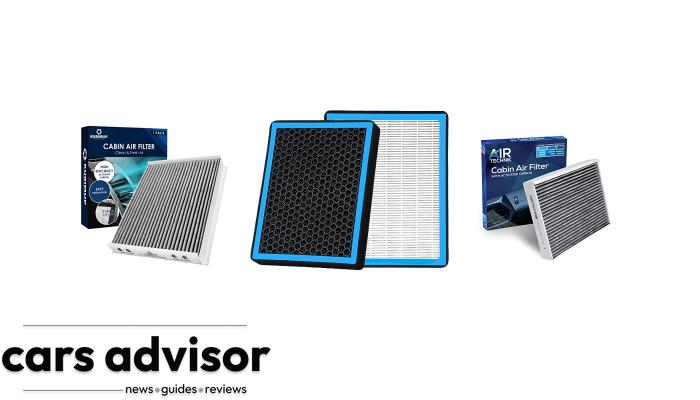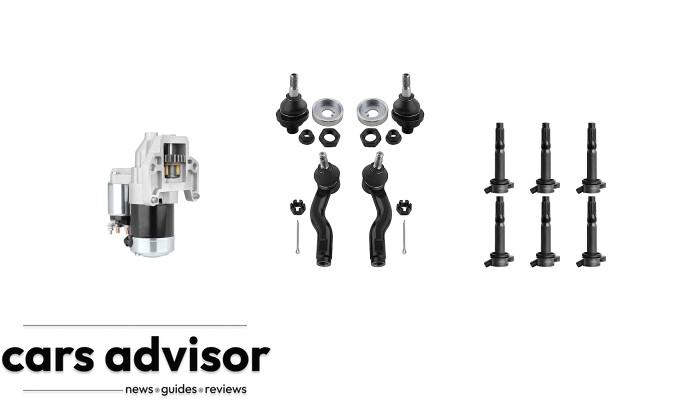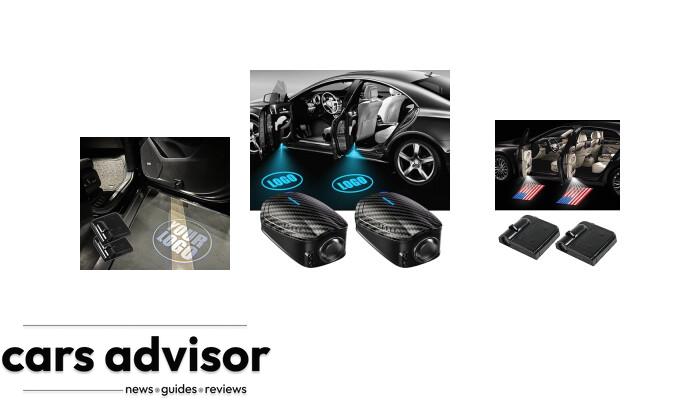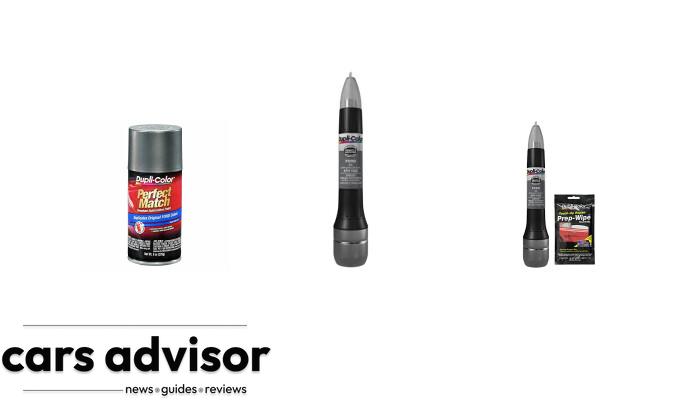Have you ever wondered what a fender on a car is? You’re not alone. Fenders are an important part of every vehicle and play an integral role in keeping you safe while driving.
But, what exactly do they do? In this article, we’ll break down the basic parts of a fender car to give you a better understanding of its purpose and how it contributes to your overall safety when behind the wheel.
Fenders are located on either side of the front or rear end of most vehicles. They serve as protective barriers between the tires and body panels that make up the outer shell of cars, trucks, vans and SUVs.
The main purpose of these pieces is to keep dirt, mud, rocks and other road debris from impacting the inner workings of your vehicle by deflecting them away from more delicate components like brakes and exhaust systems.
It also helps prevent damage caused by collisions with physical objects such as trees or poles.
The importance of having sound fenders cannot be understated – without them, your ride could quickly become unsafe for both you and others out on the roads!
Read on to learn more about their function and why having properly functioning fenders is essential for any driver who wants to stay safe while traveling around town.
Car Fender
A car fender is a metal or plastic part of your vehicle. It’s located at the front and sides of the car, around the wheel wells. Its purpose is to protect you from mud and debris kicked up by the wheels. It also helps keep road dirt off your engine parts.
The fender keeps water away from important components like brakes, suspension, and electrical systems.
Fenders are usually made from steel or aluminum but some can be made out of fiberglass or plastic too.
They come in different sizes depending on the type of car they’re being fitted to. Fenders can wear down over time due to rusting or physical damage caused by stones and other objects hitting them while driving.
Replacing a damaged fender with one that matches it will help maintain the look of your vehicle as well as its safety features.
Types Of Fenders
Fenders are an important part of a car, and come in many styles. There are front and rear fenders made from steel, aluminum or fiberglass that can be replaced with aftermarket parts when necessary.
Fenders also provide protection to the vehicle’s bodywork by deflecting minor impacts such as those caused by a minor fender bender. They help keep debris from coming into contact with the wheels and helps to reduce damage to the car’s finish.
When it comes to finding the right fender for your make and model, there are several factors that need to be considered. Here is a list of tips on how you can get the best fit:
- Look at car fender images online or royalty free stock photos
- Shop for car fender specific to your make and model
- Consider if you need a single replacement or an entire set (front & rear)
- Think about what material will work best for your needs – metal, plastic or fiberglass?
- Check if you’re looking for just a fender or a bumper and fender combo
It is important to keep in mind that some vehicles require custom-made pieces, so check before making any purchases.
The purpose of fenders is not only aesthetic; they are designed to be draped over the wheel wells of most cars in order to protect them from dirt and other debris while driving.
Fenders made out of lightweight materials like aluminum help improve fuel economy performance because they weigh less than heavier materials like steel. In addition, having better coverage around the wheels helps prevent road hazards from damaging them directly.
So no matter what type of car you drive, it pays off to find the right kind of fitted fenders for maximum safety benefits!
Materials Used In Fender Replacements
Fenders are an important part of a car. They help protect the car from damage and reduce drag while driving. Most fenders are made out of metal, but some can be made of plastic or fiberglass as well.
The material used in a fender is important because it has to be strong enough to absorb impact and resist turbulence when driving at high speeds.
Metal is the most common material used for making fenders because it provides strength and durability that other materials can’t match. Metal also helps increase the overall structural integrity of the car, which adds to its safety features.
It’s also easier to shape metal than many other materials, so manufacturers can get more creative with their designs.
Plastic and fiberglass may not offer as much protection as metal, but they’re still able to provide adequate coverage against bumps and scrapes on the road. Plus, they tend to weigh less than metal so there’s less drag when driving.
The materials used in a fender play an important role in keeping cars safe on the roads. Stronger materials like metals allow drivers to feel confident knowing their vehicle will be protected if there’s ever an accident or collision on the road.
With this extra layer of security, drivers can rest assured knowing their ride is safe no matter what comes their way!
How Fenders Cover And Protect A Vehicle
The previous section discussed the materials used to construct a fender. But why is a fender important on a car?
Fenders are designed to protect your vehicle from damage caused by debris, mud, and other particles that can be kicked up by the tires while driving.
They help to reduce turbulence created when air passes around the sides of vehicles as they travel at high speeds down highways or back roads.
Fenders also perform another critical role: they act like shields against impacts with objects such as trees, poles, animals, etc.
If you’re ever unfortunate enough to find yourself in an accident involving one of these things, having strong fenders could make all the difference in saving your car from serious damage—and possibly even saving lives!
By absorbing energy from any impact and dispersing it away from passengers inside the vehicle, well-designed fenders provide protection that no driver should take for granted.
Features Of Customized Fenders
Customized fenders are a great way to add style and protection for your car. Fender flares can be added to the side of the car, extending out from the bumper.
This helps protect against mud or dirt that could otherwise damage the paint job on your car. They also help reduce drag when driving, which can improve fuel economy.
Car fender stock images are also available so you can customize your vehicle with vintage cars in mind. New fenders come in many different colors and styles, allowing you to make your car stand out from the crowd.
The difference between a fender flare and cover is that covers usually require more installation than flares do, but offer more protection as they extend further over the wheel well area.
No matter what type of customizations you choose, having customized fenders will provide extra protection while still giving you a unique look!
Factors To Consider When Buying A Fender On A Car
A fender is a part of the car body that’s located near the wheel. It can help absorb the impact from an accident and protect your vehicle from damage. When shopping for one, there are several factors to consider:
| Quality | Cost |
|---|---|
| High | Expensive |
| Low | Cheaper |
The quality of the fender should be high; this way, it will last longer and do its job properly during a collision. However, it may also come at a greater cost than other types of fenders on the market.
If you’re looking for something more affordable, opt for one with lower-quality materials – but keep in mind that it won’t be as durable or effective when it comes to protecting your car during an accident.
On top of buying the actual fender, you’ll need to factor in repair costs if you get into an accident or suffer any kind of damage.
The type of fender you choose could affect how much money you have to pay out for repairs afterward; higher-quality ones tend to provide better protection against potential damages so they might save you some money in the long run.
So make sure to weigh all these considerations before deciding on which fender is right for your vehicle.
Benefits Of Replacing The Car’s Fender
The fender on a car is an important component – it’s the part that keeps your vehicle safe from dirt and debris. But when it gets damaged, the car can become unsafe to drive. Replacing the fender has several benefits:
- Protection of Other Components – When you replace your car’s fender, you’re protecting other components like bumpers and quarter panels from damage.
- Improved Performance – With a new fender in place, your vehicle will be able to run more efficiently since no extra drag or resistance will be caused by dents or rust spots on the old one.
- Enhanced Safety – A new fender helps keep you and your passengers safe as it won’t break off during travel and cause any dangerous situations. Having a well-functioning fender also gives peace of mind for both drivers and passengers alike; knowing their car is running better than before makes them feel secure while driving around town or taking long trips. Whether it’s due to wear-and-tear or an unfortunate accident, replacing your car’s fender is always a beneficial decision that enhances performance and safety levels alike.
The Process Of Installing A New Fender
Installing a new fender on your vehicle is a relatively easy process. It is important to have all the tools and materials necessary before beginning, as this will make it easier and faster for you to complete the task.
To begin, first remove any existing fasteners from the old fender such as screws or bolts with an appropriate tool. Then, carefully detach the old fender from its mounting points in order to expose the underlying body of your car.
Next, align the new fender’s holes with those found in your vehicle’s body and secure them together using the provided hardware.
Finally, install any covers that were removed earlier and ensure they fit snugly against both the new fender and vehicle body. With proper installation and care, your replacement fender should last for many years while keeping rotating tires away from your vehicle’s body.
Cost Of Replacing A Car’s Fender
Did you know that the average cost of replacing a car’s fender is $1,000? Fenders are essential parts of vehicles. They protect some important components and ensure your safety while driving.
A rear fender shields various systems in the back end of cars from debris kicked up on roads and highways. When it becomes damaged or dented, it should be replaced as soon as possible to prevent further damage.
Replacing a car’s fender can be costly depending on several factors such as make and model, type of material used for the replacement part, labor costs at mechanic shops, etc.
The following table provides an overview of approximate prices associated with replacing different types of fenders:
| Material Type | Cost Range | Time Frame for Replacement |
|---|---|---|
| Steel | $400-$600 | 2-3 hours |
| Fiberglass | $500-$800 | 3-4 hours |
| Aluminum | $700-$1000 | 4-6 hours |
Labor typically accounts for around half the total cost so if you want to save money, you could try doing the job yourself. However, this requires specialized knowledge and tools which may not be available to everyone.
If you do choose this route, remember to take all necessary precautions when working with automotive parts as they can be hazardous due to sharp edges and other hazards.
In addition to monetary expenses related to repair work, there may also be indirect costs like insurance premiums increasing after filing a claim or losing out on resale value since buyers tend to prefer undamaged vehicles over ones with repaired bodywork.
Therefore, it is always advisable to get your vehicle checked regularly by professionals who have experience in dealing with these kinds of repairs.
Repairing Versus Replacing The Car’s Fender
When it comes to fixing a car after an accident, the fender is often one of the first parts that needs attention.
A fender is the part located on either side of a vehicle that helps protect other parts from damage caused by road debris or minor collisions. If you’ve ever heard someone refer to an accident as a “fender bender” then this is why!
In some cases, simply repairing the existing fender may be enough. This usually involves replacing damaged metal with new panels and repainting them so they match the rest of the car.
However, if more than just aesthetic damage has been done – like dents, scratches or rusting – then it’s best to replace the entire fender for safety reasons.
Depending on your make and model of car, this could cost anywhere from several hundred dollars to over a thousand.
No matter which route you take when dealing with a damaged fender, always remember that safety should come first. After all, no amount of money can compare to having peace of mind knowing you’re keeping yourself and those around you safe out on the roads!
Common Problems With Car Fenders
Car fenders are like a shield for your car, protecting it from road debris and the elements. Unfortunately, they can often be damaged or need repairs. Here we will look at some of the most common problems with car fenders.
The first issue is dents or scratches caused by flying objects on the road such as stones or sticks. This kind of damage is not only unsightly but also weakens the metal so needs to be repaired promptly.
Another problem that may occur is rust due to moisture getting trapped between paint chips, which then corrodes the metal underneath. Rust can spread quickly so must be treated immediately before it causes further structural damage to your vehicle.
If you notice any signs of damage to your car fender, get it checked out straight away to prevent it from becoming more serious – and costly! Taking good care of this part of your car is essential if you want it looking its best while keeping you safe in all kinds of weather conditions.
Maintaining And Preserving The Car’s Fender
A fender on a car is an important part of the vehicle. It helps to protect the body of the car from minor collisions, road debris and other potential damage. Keeping it in good condition can help maintain its value and keep you safe on the road.
Cleaning your fenders regularly will ensure that they look their best and are free from rust or dirt build up.
If you notice any scratches or dents, these should be addressed as soon as possible to prevent further damage down the line.
You may want to consider applying wax or paint sealant to prevent surface corrosion caused by exposure to elements like salt, rain, snow and hail.
Minor collision repairs may also need to be done if there is significant damage; this should always be done professionally so that your safety isn’t compromised while driving.
It’s essential to inspect your fenders frequently for signs of wear and tear due to weathering, aging or excessive use – all of which can lessen their protection for you when out on the road. Taking care of them now will save you time and money later!
Care For Fender And A Bumper Cover (And Trim Parts)
A fender on a car is the part of the body that wraps around the wheel well. It’s usually made with metal, and helps protect your vehicle in case of minor collisions.
Fenders often get damaged if you have an accident or are involved in a minor collision. This can affect how much insurance you pay for your car, so it’s important to take good care of them.
To keep your fenders looking their best, make sure they’re waxed regularly. You should also be careful not to hit any bumps when driving – this could damage them or cause rusting over time.
If you do end up having a minor accident or car collision, contact your insurance company immediately so they can assess the damage and decide what kind of repairs need to be done.
They may cover some or all of the costs depending on your policy details and the severity of the incident.
It’s always better to be safe than sorry when it comes to taking care of your car – especially when it comes to making sure its parts are functioning properly!
Your bumper covers and trim pieces play a big role in keeping your vehicle running smoothly, so don’t forget about them as you drive around town.
Regular maintenance will help ensure that these auto parts remain in top condition for years to come.
Safety Tips For Working On A Vehicle’s Fender
Ah, the old days. When one could take a wrench to their car with nothing more than a pair of jeans and some elbow grease.
But times have changed – safety should be at the forefront of your mind when working on any part of your vehicle – including its fender!
Here are some essential tips for ensuring you get the job done safely and to a high-quality:
- Firstly, always wear protective gear like gloves and goggles whenever dealing with sharp edges or hazardous materials like paint fumes.
- Secondly, use appropriate tools for the task at hand; If you’re using power tools such as grinders or sanders make sure they are securely attached to something solid, otherwise you risk serious injury in case it slips off.
- Additionally, be aware that some vehicles may require special jacks depending on their size and weight – so look up instructions before attempting to raise them up.
- Last but not least, don’t forget about having someone nearby who can help if needed – even if it’s just giving moral support while watching from a safe distance!
By following these simple steps, anyone can work on their vehicle’s fender without risking harm to themselves or those around them.
So next time you decide to tackle this task yourself, remember to stay safe and enjoy the challenge!
Does Maintaining a Car’s Fender Affect Its Overall Maintenance Cost?
Maintaining a car’s fender can indeed influence its cheapest car maintenance costs. Neglecting the fender can lead to more serious issues, such as rust or structural damage, which can significantly increase the overall maintenance expenses. Therefore, prioritizing fender maintenance can help keep the costs down in the long run.
Diy Tips For Installing Or Replacing A Car’s Fender
Installing or replacing a car’s fender can be an intimidating task. But with the right set of tools and some know-how, it doesn’t have to be so hard! Here are some DIY tips for installing or replacing your car’s fender:
- Gather Your Tools – Gathering all of the necessary tools ahead of time is key in making sure you don’t run into any problems during installation. Make sure you have things like drill bits, screwdrivers, wrenches, pliers, and other basic hand tools on hand before starting.
- Read Instructions Carefully – Take the time to read through the instructions carefully before beginning work on your car’s fender. This will ensure that everything goes smoothly and that no mistakes are made along the way.
- Take Your Time – Don’t rush the process when working on your car’s fender; taking your time will help make sure that everything is done correctly and safely.
These easy steps should help get you started if you’re looking to do this project yourself at home! With just a little bit of preparation and patience, you’ll be able to get your new fender installed quickly and easily. Good luck!
Frequently Asked Questions
Are Fenders Necessary For A Car?
As the adage goes, “safety first” and this is especially true when it comes to cars. Are fenders necessary for a car? This is an important question that requires further examination.
In general, yes, fenders are essential components of any vehicle. Without them, your car could suffer from significant damage over time due to dirt, mud or rocks being thrown up onto the bodywork as you drive.
Fenders also help protect drivers in case of a collision by absorbing some of the impact before it reaches the occupants inside the car. Additionally, they act as shock absorbers which can reduce noise while driving and make your journey more comfortable overall.
Fenderless cars may look cool but they put you at risk on the road. Not only do they provide less protection in a crash situation but they’re also far more prone to rusting and other corrosion-related issues due to exposure with rainwater and other elements.
It’s therefore wise to invest in quality fenders for your vehicle if you want reliable performance and long-term safety.
Are Fenders Easy To Install?
Fenders are an important part of your car. They provide protection to the body and keep it looking nice. Installing them can seem like a daunting task, but with some basic knowledge and tools, they’re actually quite easy to install.
Here’s what you need to know:
- Tools & Materials:
- You’ll need a few simple tools such as screwdrivers, wrenches, pliers and a drill.
- The materials needed will depend on the kind of fender you choose – metal or plastic. Metal fenders require rivets and screws while plastic ones just need bolts and nuts.
- Preparing for Installation:
- Before installation begins, make sure all parts fit properly in place; use masking tape if necessary to aid alignment of parts during assembly.
- Make sure that there is no dirt or debris left behind from previous installations; this could cause rust when exposed to moisture.
Installing fenders isn’t complicated if you have the right supplies and information handy. Take your time when assembling everything so that nothing gets missed or misplaced – it’s better to be safe than sorry!
Be aware that different kinds of cars may require different methods for installing their fenders correctly – always consult the manufacturer’s instructions before beginning any project involving auto repair or maintenance.
With these tips in mind, you should be able to tackle most fender installation projects without too much difficulty!
What Is The Difference Between A Bumper And A Fender?
At first glance, bumpers and fenders may seem like the same thing. But underneath their shiny exterior, they are two completely different pieces of a car’s anatomy. Here is an exploration of what sets them apart:
A bumper is a layer of protection that helps absorb impact from minor collisions or bumps in the road. It often has an outer layer made up of plastic or metal for extra strength.
On the other hand, a fender does not provide as much protection against impacts because it’s usually made out of lightweight materials such as fiberglass, plastic, or carbon fiber.
Its main purpose is to help prevent rocks, mud and debris kicked up by the tires from hitting pedestrians or other vehicles on the road.
Here are three key differences between bumpers and fenders:
- Bumpers have more reinforcement than fenders do;
- Fenders protect against gravel and dirt while bumpers protect against heavier objects;
- Fenders come in many shapes and sizes depending on the type of vehicle whereas bumpers stay fairly consistent across all cars.
When driving down the highway you can be sure that both bumpers and fenders will keep you safe from everyday mishaps – even if one offers slightly more defense than the other!
So next time you find yourself behind the wheel, take comfort knowing that these two components work together to create a shield around your car no matter where your journey takes you.
What Is The Best Material To Use For A Car Fender?
Figuring out the best material to use for a car fender is important. Fenders help protect your vehicle from debris and rocks kicked up by other cars, so they need to be tough enough to withstand those impacts.
But you also want them to look great too! So what’s the best way to go? Let’s take a closer look at some of your options.
Steel is often seen as the top choice when it comes to making fenders. It’s strong and durable, meaning it won’t get damaged easily.
Plus, steel can be painted in almost any color, so you can customize the look of your car without having to worry about fading or rusting.
The downside is that steel can be expensive, heavier than other materials, and harder to install on curved surfaces.
Aluminum is another popular option for car fenders. It’s lightweight but still very resilient – plus, it doesn’t corrode like steel does over time.
Aluminum also offers more flexibility when it comes to installation since it can conform better around curves and shapes compared with steel.
However, aluminum isn’t quite as strong as steel and may not always provide the same level of protection against impact damage.
So which one should you choose for your car fender? Ultimately, it depends on how much money you are willing to spend, how much protection you need, and what type of aesthetic design you prefer for your vehicle.
Steel might cost more upfront but could last longer while aluminum might offer more flexibility but less durability overall – it just depends on what works best for you!
Are There Any Special Tools Required To Install A Fender?
Installing a fender on your car might sound like a daunting task, but it doesn’t have to be! You don’t need any special tools and you can do the job yourself. Here’s what you need to know:
First of all, prepping the area where you’ll install the new fender is key. Make sure there aren’t any rust spots or dirt that could get in the way. It’s also important to measure twice before cutting anything – if it doesn’t fit, you’ll have to start from scratch again.
Once everything is ready for installation, here are some steps to help guide you along: *Tools & Materials Needed:
- Tools:
- Socket Wrench Set
- Screwdriver Set
- Hammer (optional)
- Materials:
- Replacement Fender
- Nuts & Bolts
- Metal Clamp (optional)
Installation Steps:
- Loosen existing bolts with socket wrench set and remove old fender.
- Measure replacement fender against opening and make adjustments as needed—use markdown pen/marker to mark off areas that need trimming.
- Secure new fender into place with nuts & bolts provided; use metal clamp if necessary for extra support.
- Tighten screws with screwdriver set until secure; use hammer if necessary for stubborn screws that won’t budge.
By following these simple steps, installing a replacement fender should be easy-peasy!
Preparation is essential in order to ensure smooth sailing during installation so pay close attention when measuring and cutting pieces for your new fender —otherwise, nothing will fit properly!
Plus, having the right tools handy will save time too – no more running around looking for forgotten items halfway through the process!
Conclusion
In conclusion, fenders are a necessary part of any car. They protect the body and other parts from damage that can occur in a collision or due to debris on the road.
The materials used for fenders vary, but fenders made of aluminum is often chosen as it is lightweight yet strong enough to withstand impacts.
Installing a fender isn’t particularly difficult, although certain tools may be needed depending on the type of car and make of fender being installed.
Overall, replacing a damaged fender with one made from quality material will help ensure your vehicle looks great while also protecting its more important components.
In fact, research shows that drivers who replace their dented or cracked fenders tend to experience fewer issues down the road than those who don’t!
So if you ever find yourself needing to install a new fender onto your ride, take some time to look into all your options and choose something durable that will last over time.
We hope this article helped explain what a car’s fender does and why it’s an essential part of any vehicle. With just a bit of knowledge about how they work, you can keep both your car looking good and running safely for years to come!
